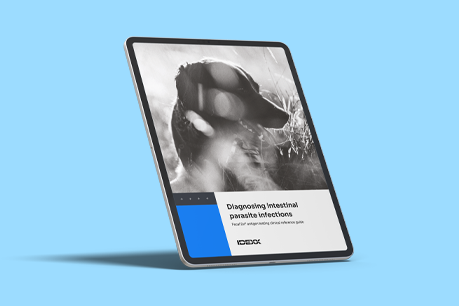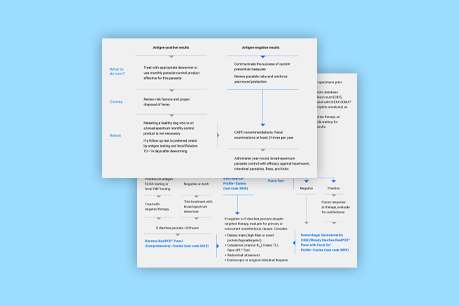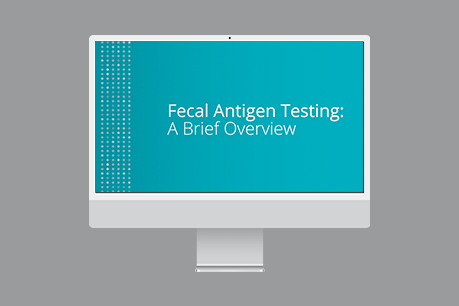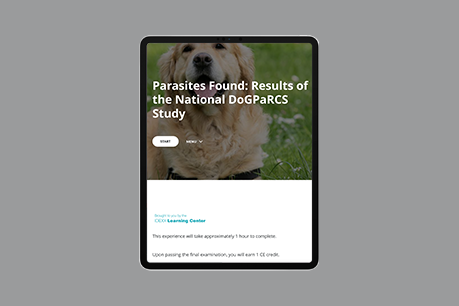Fecal Dx antigen testing
Resources and education.

Innovation in every direction.
Ready to learn more about how our advanced Fecal Dx antigen testing works and how it’s helping pets in the real world? You’ve come to the right place.

Clinical reference guide
From infection to presentation: learn how to diagnose hookworm, roundworm, whipworm, flea tapeworm, and Cystoisospora earlier.

Diagnostic update
With Fecal Dx antigen testing, find parasite infections the microscope misses.

Algorithms
Get guidance on next steps and recommendations for testing based on Fecal Dx antigen testing results and patient symptoms.

Case studies
Discover how infections were caught before symptoms were present or without the presence of eggs.
Microlearning
Differentiating Cystoisospora spp. from Eimeria spp.
Webinars
Our educational resources include a variety of courses, webinars, and videos about the importance and benefits of fecal testing.

Focus on Fecal Testing

Fecal Antigen Testing: A Brief Overview

Why Poop Matters—Fecal Dx and Parasite Testing
